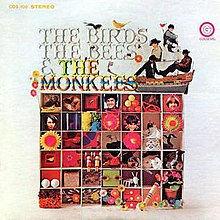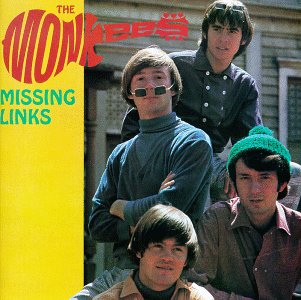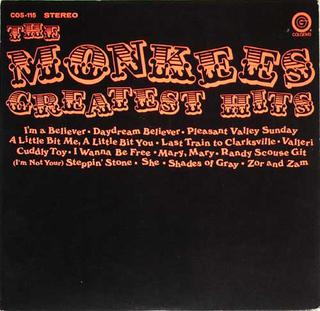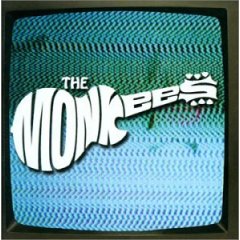Dream World - Written by David Jones and Steve Pitts
- Lead vocal: Davy Jones
- Guitar: Michael Deasy, Al Hendrickson, Gerry McGee
- Harpsichord: Don Randi
- Bass: Max Bennett
- Drums: Earl Palmer
- Percussion: Brendan Cahill, Teresa Helfer, Milt Holland, Jerry Williams
- Violin: Sam Freed, Nathan Kaproff, George Kast, Martin Limonick, Alexander Murray, Erno Neufeld
- Cello: Marie Feram, Edgar Lustgarten, Jacquelyn Lustgarten, Fredrick Seykora
- Trumpet: Buddy Childers, Jack Sheldon
- Trombone: George Roberts
- French Horn: John Cave, Don Duke, Arthur Maebe
- Arrangement: Shorty Rogers
- Recorded at Western Recorders Studio 2, Hollywood, California; February 6, 1968 and RCA Victor Studios, Hollywood, California; 8 February 8, 1968
Auntie's Municipal Court - Written by Keith Allison and Michael Nesmith
- Lead vocal: Micky Dolenz
- Harmony vocal/percussion: Michael Nesmith
- Backing vocals: Michael Nesmith, Bill Chadwick, and Unknown
- Electric guitar: Michael Nesmith, Keith Allison, Bill Chadwick
- Bass: Richard Dey
- Drums: Eddie Hoh
- Recorded at RCA Victor Studios, Hollywood, California; January 6, 15-16, 1968
- Mono mix features louder guitar accompaniment
We Were Made for Each Other - Written by Carole Bayer Sager and George Fischoff
- Lead vocal: Davy Jones
- Guitar: James Burton, Michael Deasy, Al Hendrickson, Gerry McGee
- Harpsichord: Michael Melvoin
- Bass: Max Bennett
- Drums: Earl Palmer
- Percussion: Brendan Cahill, Milt Holland, Jerry Williams
- Mallet: Milt Holland
- Violin: Sam Freed, Nathan Kaproff, George Kast, Marvin Limonick, Alexander Murray, Erno Neufeld
- Cello: Maria Fera, Jacquelyn Lustgarten, Kurt Reher, Eleanor Slatkin
- Trumpet: Buddy Childers, Jack Sheldon
- Trombone: Lewis McCreary
- French horn: Vincent DeRosa, David Duke, Richard Preissi
- Arrangement: Shorty Rogers
- Originally intended for Pisces, Aquarius, Capricorn & Jones Ltd.
- Recorded at Western Recorders Studio 2, Hollywood, California; February 6, 1968 and RCA Victor Studios, Hollywood, California; February 7 and 9, 1968
Tapioca Tundra - Written by Michael Nesmith
- Lead vocal/whistle/electric and acoustic guitars/percussion: Michael Nesmith
- Bass: unknown
- Drums: Eddie Hoh
- Recorded at RCA Victor Studios, Hollywood, California; November 11, 18-19, 1967
Daydream Believer - Written by John Stewart
- Lead/backing vocals: Davy Jones
- Harmony vocal: Micky Dolenz
- Electric guitar: Michael Nesmith
- Piano: Peter Tork
- Producer/bass/percussion: Chip Douglas
- Bell: Bill Martin
- Drums: Eddie Hoh
- Violin: Nathan Kaproff, George Kast, Alex Murray, Erno Neufeld
- Trumpet: Pete Candoli, Al Porcino, Manuel Stevens
- Piccolo trumpet: Manuel Stevens
- Trombone: Richard Noel
- Bass trombone: Richard Leith, Philip Teele
- Arrangement: Shorty Rogers
- Recorded at RCA Victor Studio A, Hollywood, California; June 14, 1967 and RCA Victor's Nashville Sound studio, Nashville, Tennessee, August 9, 1967
- Issued as a single on Colgems #1012, 25 October 1967, No. 1
- Only song on Birds featuring all members of the band, and the only song featuring Tork at all.
- Replaced "Love is Only Sleeping" as a single.
- Used in Monkees episodes "Art, For Monkees' Sake", "Monkees Marooned", "A Coffin Too Frequent", "Hitting the High Seas".
Writing Wrongs - Written by Michael Nesmith
- Lead vocal/electric guitar/organ/piano: Michael Nesmith
- Bass: Richard Dey
- Drums/percussion: Eddie Hoh
- Recorded at RCA Victor Studios, Hollywood, California; December 3, 1967
- Final product is two takes spliced together
I'll Be Back Up On My Feet - Written by Sandy Linzer and Denny Randell
- Lead/backing vocals: Micky Dolenz
- Guitar: Al Casey, Michael Deasy, Dennis Budimir
- Harpsichord: Michael Melvoin
- Bass: Max Bennett
- Drums: Earl Palmer
- Percussion: Brendan Cahill
- Tambourine: Milt Holland, Stan Levey
- Quica: Milt Holland, Stan Levey
- Saxophone: William Hood
- Trumpet: Buddy Childers, Oliver Mitchell
- Trombone: Louis Blackburn, Lew McCreary
- Arrangement: Shorty Rogers
- Recorded at RCA Victor Studios, Hollywood, California; March 9 and 14, 1968
- Intended for More of The Monkees , then again for Pisces, Aquarius, Capricorn & Jones Ltd.
- Original version featured in The Monkees episodes "Dance Monkee, Dance" and "Monkees in the Ring".
The Poster - Written by David Jones and Steve Pitts
- Lead/backing vocals: Davy Jones
- Guitars: Al Casey, Michael Deasy, Howard Roberts
- Organ: Don Randi
- Bass: Max Bennett, Lyle Ritz
- Drums: Hal Blaine
- Glockenspiel/percussion/tambourine: Gary Coleman, Gene Estes
- Trumpet: Buddy Childers, Clyde Reasinger, Jack Sheldon, Anthony Terran
- Trombone: Milt Bernhart, Richard Leith, Lew McCreary, Frank Rosolino
- Saxophone: John Lowe
- Woodwind: John Lowe
- Violin: Nathan Kaproff, George Kast, Marvin Limonick, Alex Murray, Erno Neufeld, Ambrose Russo
- Arrangement: Shorty Rogers
- Recorded at RCA Victor Studios, Hollywood, California; February 15 and 17, 1968
P.O. Box 9847 - Written by Tommy Boyce and Bobby Hart
- Lead vocal: Micky Dolenz
- Backing vocal: Probably Coco Dolenz, Micky Dolenz
- Electric guitars: Gerry McGee, Louie Shelton
- Bass: Joe Osborn
- Tack piano: Bobby Hart
- Drums/percussion: Billy Lewis
- Violin: Victor Arno, Jack Pepper
- Viola: Philip Goldberg
- Cello: Raymond Kelley
- Marxophone/tabla: unknown
- Arrangement: Don McGinnis
- Inspired by an idea by Bob Rafelson
- Although credited to The Monkees, the song was produced by Tommy Boyce and Bobby Hart
- Recorded at United Recorders, Hollywood, California; December 26, 1967; February 10, 1968
Magnolia Simms - Written by Michael Nesmith
- Lead vocal/guitar: Michael Nesmith
- Tack piano: Paul T. Smith
- Bass: Max Bennett
- Drums: Earl Palmer
- Trumpet: Oliver Mitchell
- Trombone: Lew McCreary
- Woodwinds: Jim Horn, Jack Nimitz
- Recorded at RCA Victor Studios, Hollywood, California; December 2, 1967
- Recorded as a low-fi song with deliberate surface noise and skipping as if it came from a 78 RPM record. On the stereo mix, this track is heard only on the left channel.
| Valleri - Written by Tommy Boyce and Bobby Hart
- Lead vocal: Davy Jones
- Backing vocal: unknown
- Electric guitars: Gerry McGee, Louie Shelton
- Bass: Joe Osborn
- Drums: Billy Lewis
- Tambourine: Billy Lewis
- Saxophones: Jim Horn, Jay Migliori
- Trumpets: Oliver Mitchell, Roy Caton
- Trombone: Lew McCreary
- Arrangement: Don McGinnis
- Although credited to The Monkees, the song was produced by Tommy Boyce and Bobby Hart
- Recorded at United Recorders, Hollywood, California; December 26 and 28, 1967
- Issued as a single as Colgems #1019, February 17, 1968, reaching number three.
- Colgems chief Lester Sill added brass section to mix after rejecting initial mix
- This mix was used for the episode "Monkee's Blow Their Minds" with the fade-out dropped (a factor which would later be used on compilations).
- Featured in The Monkees episode "The Monkees Blow Their Minds"; original version featured in "Captain Crocodile" and "Monkees in Manhattan"
Zor and Zam - Written by Bill Chadwick and John Chadwick
- Lead vocal: Micky Dolenz
- Electric guitars: Keith Allison, Bill Chadwick
- Bass: Chip Douglas, Richard Dey, Max Bennett
- Piano: Michael Melvoin
- Drums: Hal Blaine, Eddie Hoh, Milt Holland, Stan Levey
- Percussion: Micky Dolenz, Hal Blaine, Milt Holland, Stan Levey, Henry Diltz
- Gong: Hal Blaine, Milt Holland, Stan Levey
- Timpani: Hal Blaine, Milt Holland, Stan Levey
- Trombone: Milt Bernhart, Richard Leith, Lew McCreary, Frank Rosolino
- Trumpet: Buddy Childers, Clyde Reasinger, Jack Sheldon, Anthony Terran
- Violin: Nathan Kaproff, George Kast, Marvin Limonick, Alex Murray, Erno Neufeld, Ambrose Russo
- Saxophone/woodwind: John Lowe
- Arrangement: Shorty Rogers
- Alternate early version featured in The Monkees final episode "The Frodis Caper"
- Recorded at RCA Victor Studios, Hollywood, California; January 7, 13, 18 and February 14, 17, 1968
Alvin - Written by Nicholas Thorkelson
- Spoken words: Peter Tork
- Recorded at Western Recorders, Hollywood, California; January 20, 1968
I'm Gonna Try - Written by David Jones and Steve Pitts
- Lead vocal: Davy Jones
- Guitar: Al Casey, Mike Deasey, Howard Roberts
- Bass: Lyle Ritz
- Drums: Hal Blaine
- Harpsichord: Don Randi
- Marimba/tambourine: Gary Coleman, Gene Estes
- Trombone: Milt Bernhart, Richard Leith, Lew McCreary, Frank Rosolino
- Trumpet: Buddy Childers, and Clyde Reasinger, Jack Sheldon, Anthony Terran
- Saxophone: John Lowe
- Woodwind: John Lowe
- Violin: Nathan Kaproff, George Kast, Marvin Limonick, Alex Murray, Erno Neufeld, Ambrose Russo
- Recorded at RCA Victor Studios, Hollywood, California; February 15 and 17, 1968
- Originally considered for Changes
- Similar music track to Jones/Pitts song "Party", recording during same session
P.O. Box 9847 (early mix) - Moog Synthesizer: Micky Dolenz
- Earlier mix features moog synthesizer instead of string section
- Recorded at United Recorders, Hollywood, California; December 26, 1967
The Girl I Left Behind Me (second recorded version) - Written by Carole Bayer Sager and Neil Sedaka
- Lead vocal: Davy Jones
- Other personnel unknown
- Recorded at RCA Victor Studios, Hollywood, California; October 31 and November 7 and 21, 1967
Lady's Baby (alternate mix) - Written and produced by Peter Tork
- Lead vocal/guitar: Peter Tork
- Backing vocal: Karen Harvey Hammer
- Electric guitar: Stephen Stills
- Bass: Lance Wakely
- Drums: Dewey Martin
- Sound effects: Justin Hammer
- Recorded at RCA Victor Studios, December 1, 17, 21, 1967, and January 14, 19, 24, 1968; Western Recorders, Hollywood, California; February 2 and 7, 1968
- Constant production changes and re-recordings resulted in song not being finished in time for release
D. W. Washburn (1968 stereo mix) - Written by Jerry Leiber and Mike Stoller
- Lead vocal: Micky Dolenz
- Backing vocal: Unknown
- Guitar: Keith Allison, Bill Chadwick
- Banjo: Henry Diltz
- Bass: Chip Douglas
- Drums: Jim Gordon
- Tack Piano: Michel Rubini
- Glockenspiel: Larry Bunker
- Saxophone: Bill Hood
- Trumpets: Carroll Lewis, Williamson
- Trombone: Lou Blackburn, Herbie Harper
- Recorded at RCA Victor Studios, Hollywood, California; February 17 and March 1, 1968
It's Nice To Be with You (1968 stereo mix) - Written by Jerry Goldstein
- Lead vocal: Davy Jones
- Guitars: James Burton, Mike Deasy, Al Hendrickson, Gerry McGee
- Bass: Max Bennett
- Drums: Earl Palmer
- Keyboard: Michael Melvoin
- Violins: Sam Freed, Nathan Kaproff, George Kast, Marvin Limonick, Alex Murray, Erno Neufeld
- Cellos: Marie Fera, Jacqueline Lustgarten, Kurt Reher, Eleanor Slatkin
- Saxophone: Bill Hood
- Trumpets: Buddy Childers, Oliver Mitchell
- French horn: Vincent DeRosa, David Duke, Dick Perissi
- Trombones: Lou Blackburn, Lew McCreary, Jack Sheldon
- Recorded at Western Recorders, Studio 2, February 6, and RCA Victor Studios, Hollywood, California; February 7, 1968
Ceiling in My Room (1967 stereo mix) - Written by Dominick DeMieri, Robert Dick and David Jones
- Lead/backing vocals: Davy Jones
- Guitars: Dom DeMieri, Eddie Placidi
- Bass: Robert Dick
- Drums: Kim Capli
- Piano: Charlie Smalls
- Recorded on November 14, 1967
Auntie's Municipal Court (alternate mix) - Lead/harmony vocals: Michael Nesmith
- Additional harmony vocals: Micky Dolenz
- Co-lead vocals: Micky Dolenz
- Alternate mix featuring Nesmith on lead vocals with extra sound effects during final instrumental, although Dolenz still appears as the lead vocalist briefly during a couple of segments in the final verses at 2:45 and 3:16
Other personnel- Produced by The Monkees (except "Daydream Believer" produced by Chip Douglas)
- Recording engineers: Pete Abbot, Hank Cicalo
- Music supervision: Lester Sill
- Original cover design: Allan Wolsky and friends
|



















